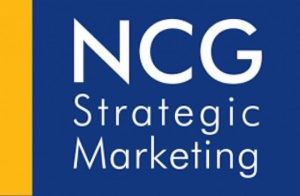Why is it that the arena of online marketing and PR often reminds me of one of those old-time carnivals? It’s almost impossible to navigate along the online midway enjoying your cotton candy without falling prey to the multitudes of self-proclaimed “gurus” and “leaders” in your path, all of them promising that there’s nothing easier than to follow their advice, knock over the three milk bottles and win the biggest prize.
And yet, that doesn’t mean that there aren’t some legitimate leaders in our brave new world of marketing and PR, and I’m able to say with confidence that David Meerman Scott is one of the few. Over the course of a successful career in corporate marketing and public relations, David saw that the traditional practices that had long been used in these two disciplines were being discarded for a new set of rules, and he saw this long before many of his fellow practitioners were convinced. Based on what he saw happening, three years ago David wrote what became a phenomenally successful book, The New Rules of Marketing & PR.
In a field that sees countless new titles on a continual basis, this work was the bestselling public relations book on Amazon for nearly two years, has sold hundreds of thousands of copies and has been translated into 24 languages. And it’s telling that the term “social media” didn’t even make it into the first edition, which was published less than three years ago, in June 2007. When David was writing the book in 2006, Facebook was still only for those with an .edu email address and Twitter had barely caused a ripple.
So, it’s an indicator of just how fast social media has become the 800-pound gorilla in marketing and PR that the newly-released second edition prominently features “social media” in the revised subtitle, “How to Use Social Media, Blogs, News Releases, Online Video, and Viral Marketing to Reach Buyers Directly.”
Yet, the main message of the book hasn’t changed. And therein lies the beauty of it. The New Rules of Marketing & PR has been successful for many reasons, but here’s a big one: Instead of focusing on numbers (e.g., how many people are on your email list, tips and tricks for improving your Web site’s SEO or getting your press release into as many hands as possible), David knows that content is still king. His sine qua non of online content is that it must be customer-focused and compelling. This theme is found in one of his favorite mantras: You must earn the attention of the public.
I like that word, “earn.” It implies honesty and integrity. But it sounds kind of like work, doesn’t it? It means that you need to focus on creating authentic, compelling content that will: 1) appeal to your prospective clients and customers, 2) provide them with something of value, and 3) keep them coming back for more.
In our unbelievably busy, fragmented and distracted world, that’s not easy to do. How do you get yourself heard above the noise? How do you get people to watch your show more than once? This isn’t just work, it’s hard work. This is knowing what your prospective customers are interested in, addressing their needs and interests, and putting yours on ice. This is being a journalist and a thought leader. This is the opposite of spending your time figuring out how to game Google.
Does this mean that David is not a believer in the importance of SEO? No, that’s not a fair criticism, for he fully understands how useful SEO can be in helping your customers find you and your site. And that’s quite important, given all the noise and distractions out there.
But on a recent podcast, David put search engine optimization in its place. He emphasized that if he were making a recommendation to a company that wanted to increase visitors to its site – and the firm had a budget to hire someone to help – he would suggest hiring an SEO expert only after first hiring someone who had experience as a professional journalist. (He even suggested that after the journalist was on board, he’d hire a copywriter next, before hiring an SEO expert.)
Why is that? Because it’s all about having engaging content, and there’s not much use in driving traffic to your site if there’s nothing there to engage your visitors.
So, focus on your customers. Address their interests, not yours. And you will earn their attention.


